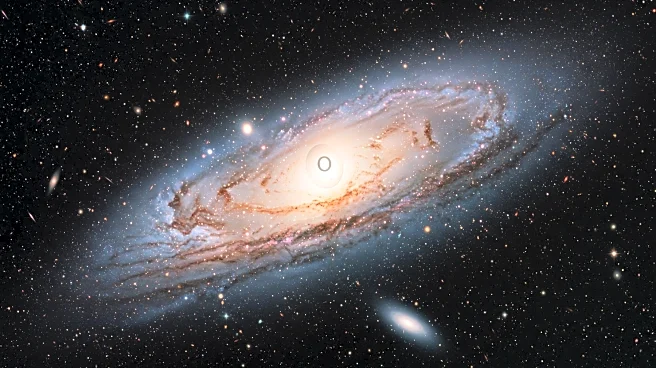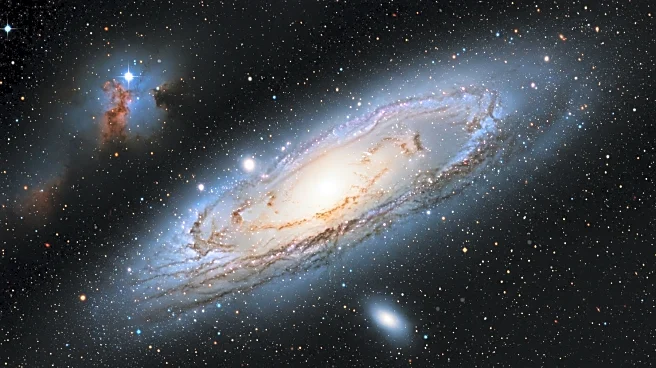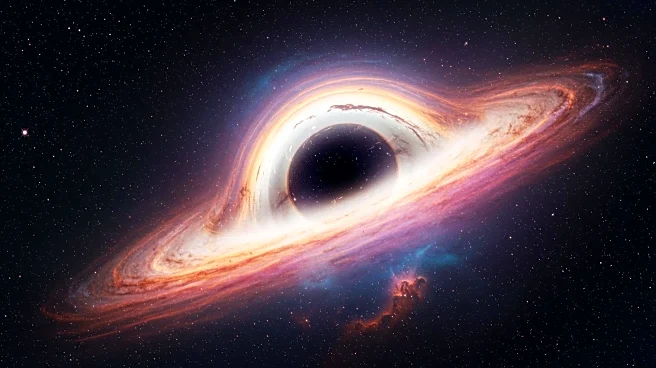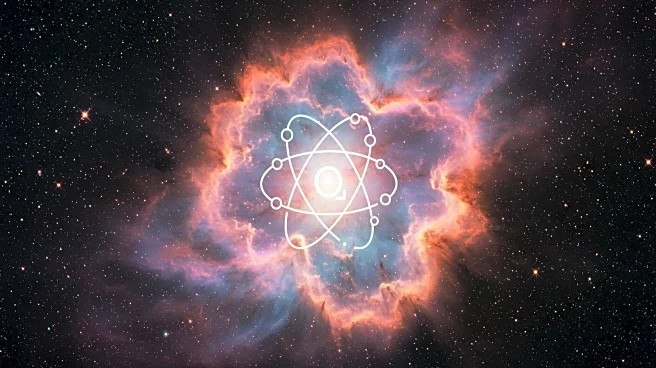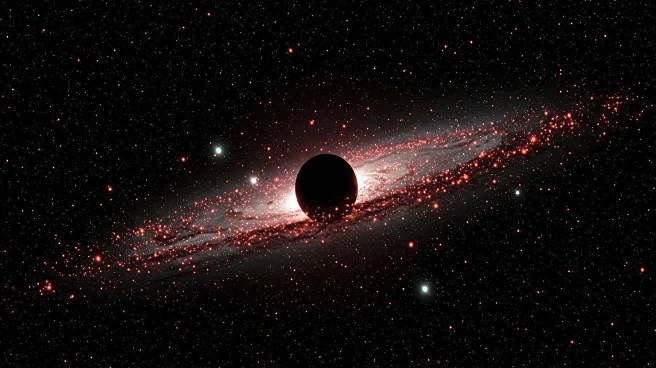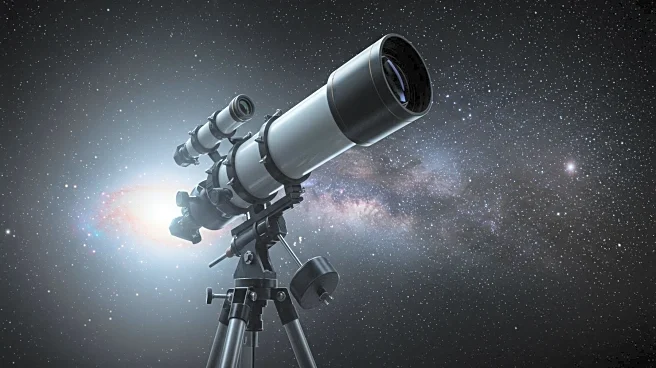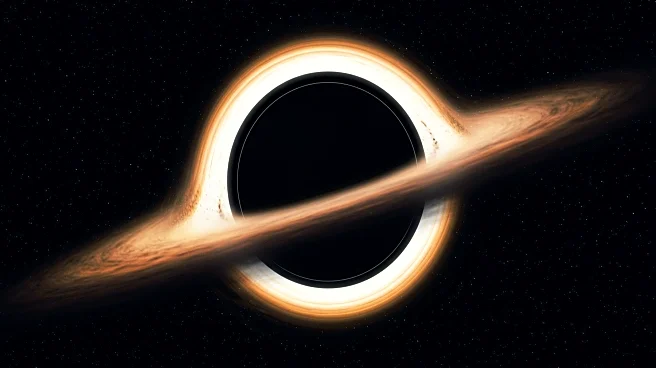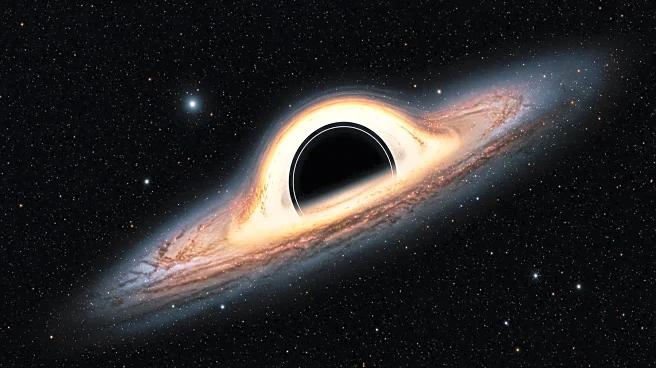Rapid Read • 8 min read
Astronomers have identified a category of black holes known as 'lite intermediate black holes' (IMBHs), which are smaller than supermassive black holes but larger than stellar mass black holes. These IMBHs range from a few hundred to a few hundred thousand times the mass of the Sun. The discovery was made by analyzing gravitational wave data from the Laser Interferometer Gravitational-Wave Observatory (LIGO). Researchers found evidence of black hole mergers that resulted in IMBHs, suggesting that these black holes fill a gap in the understanding of cosmic evolution. The study analyzed 11 black hole merger candidates from LIGO's third observing run, with five post-merger black holes confidently identified as IMBHs.
AD
The identification of intermediate black holes is significant as it provides insights into the formation and evolution of black holes in the universe. These black holes are difficult to detect and their existence suggests alternative pathways for black hole formation beyond the collapse of massive stars. Understanding IMBHs can help astronomers learn more about the dynamics of black hole mergers and the growth of galaxies. This research could lead to a better understanding of the universe's structure and the processes that govern cosmic evolution, potentially impacting theories of galaxy formation and the lifecycle of stars.
With LIGO's fourth observing run underway, researchers plan to apply their analysis to new data to further investigate IMBHs. This ongoing research aims to improve the detection and understanding of these black holes, shedding light on their formation mechanisms. As more data becomes available, scientists hope to refine their models and increase the confidence in identifying IMBHs, contributing to a more comprehensive understanding of black hole dynamics and cosmic evolution.
The discovery of IMBHs raises questions about the processes that lead to their formation, challenging existing models of black hole creation. It suggests that black holes can merge multiple times, creating larger black holes over time. This finding could influence the study of gravitational waves and the methods used to detect cosmic events, potentially leading to advancements in astrophysics and the technology used in space observation.
AD
More Stories You Might Enjoy
